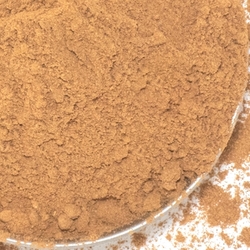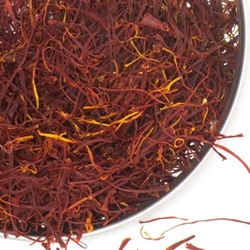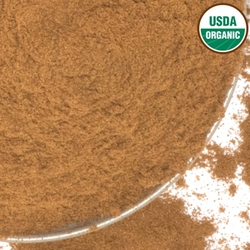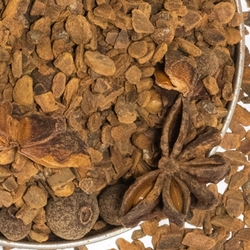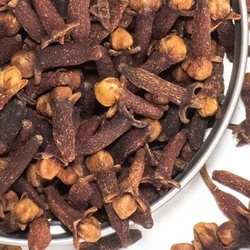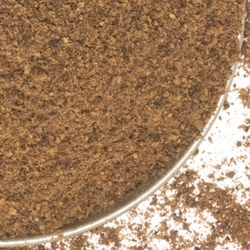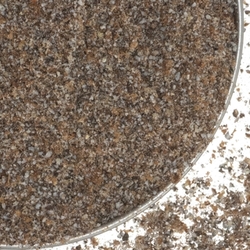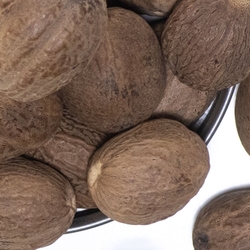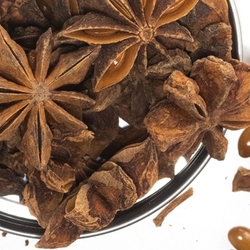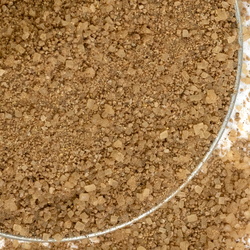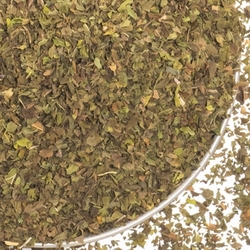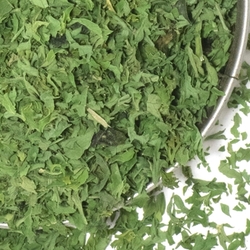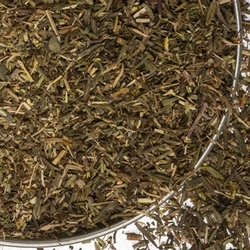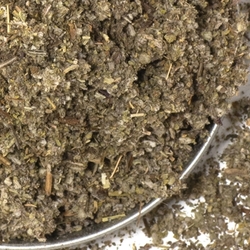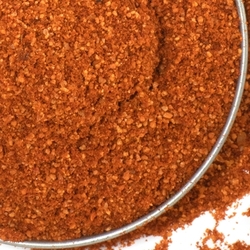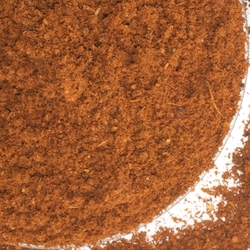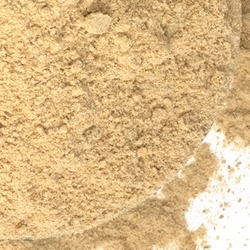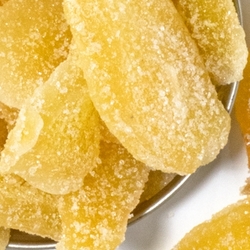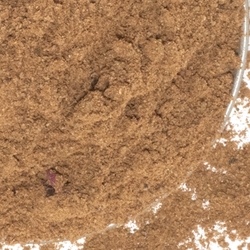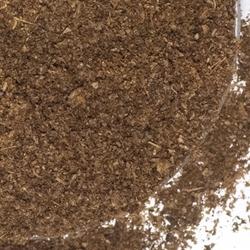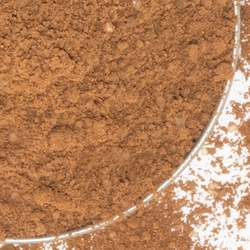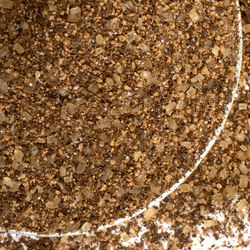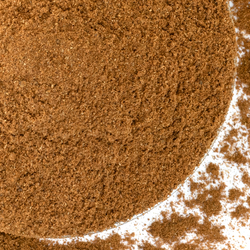Holiday Spice Guide
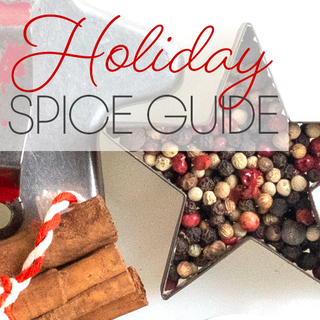
Popular Holiday Spices
Holiday cooking is an entity unto itself. For the last three months of the year, from the start of Pumpkin Pie Spice season to the new year, consumers are looking for ways to enjoy the flavors of holidays past. For restaurants, packaging companies, and specialty retailers, the holidays are a veritable cornucopia of flavor-filled opportunities to dazzle. The season is packed with fragrant, mouthwatering recipes that create feelings of nostalgia, comfort, and well-being. People want the spices and blends that evoke Grandma's turkey or Mom's secret-ingredient spice cookies. They want special flavors, rich foods in accompanied by bold gravies or sauces they might not have throughout the rest of the year. This is our list of seasonal favorites that people are looking for in order to make holidays deliciously bright, year after year.
Thanksgiving Spices
At Thanksgiving, our thoughts turn to the bountiful flavors of the harvest; rich, warm spices meant to accent apple and pumpkin pies fresh out of the oven or a turkey seasoned with spices and basted in butter, roasting into crisp brown deliciousness.
Thanksgiving Seasonings
Turkey Brine is a key player in the holiday kitchen, to help you put the most succulent turkey possible on your table.
Pumpkin Pie Spice is a natural choice for baking during this festive time of year. It's a delicious choice when making pies, scones, muffins, or even savory foods like soups or pastas. Available in both conventional and organic options. If you want a little heat, try Spicy Pumpkin Pie Spice for both sweet and savory dishes.
Apple Pie Spice, whether you want organic or conventional, is a balanced blend of cinnamon, allspice, nutmeg, ginger, and cardamom. It’s great in bread and cookies and can add a pleasant dash to sweet potatoes and leafy greens like spinach.
Mexican Mole Powder has its roots in a sauce made for turkey, so it’s easy to see why we’d use it on Thanksgiving. It’s also delicious with chicken, pork, shrimp, or mushrooms.
Enchilada Seasoning is the spice blend to choose when you're looking to feed a hungry crowd of holiday revelers.
Mulling Spice creates warm, fragrant wine or cider that you can enjoy throughout the entire winter. Have some on Thanksgiving, Christmas, or for a New Year’s toast.
Poultry Seasoning is herbaceous and woodsy, an energizing mix of thyme, rosemary, sage, marjoram, and oregano. It's a Thanksgiving workhorse, so challenge yourself to think outside the turkey. Try it sprinkled over rolls, tossed over sweet potatoes, or roasted with asparagus or parsnips.
Thanksgiving Whole Spices
Allspice is just one berry, not a spice blend. It's so named because it also delivers the pleasantly warm and fragrant aroma of cinnamon, cloves, and nutmeg, with just a pinch of pepper.
Cloves are the unopened flower bud of a tree in the myrtle family and have a clean, biting scent and flavor. Imagine cinnamon, but with a sharper tooth.
Cumin is earthy and deep but offers a surprising, lemony twist. It goes wonderfully over cheese dishes and rolls or roasted with green beans, potatoes, and carrots.
Nutmeg is bittersweet, with deep woody tones. Nutmeg partners well with carrots, cheese dishes, pumpkin pie, spinach, and sweet potatoes, as well as in cakes or sprinkled over eggnog.
Orange Peel adds a zippy, fruity brightness to savory dishes. It perks up vinaigrettes and herb crusts on roasts and brings contrast to a tart, homemade cranberry sauce.
Christmas Spices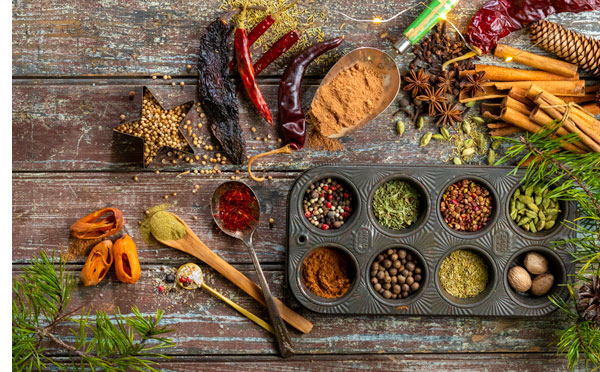
When we think of the blends and spices that make Christmas cooking special, we think of the cozy and warm ones. They may make a meal grand and memorable or evoke nostalgic thoughts at every mouthful.
Christmas Seasonings
Baharat sounds like an unconventional blend to use at Christmas but is an easygoing mix of paprika, black pepper, cumin, coriander, clove, nutmeg, cinnamon, and cardamom, and accents everything from roast chicken to poached pears, and is a shortcut to a savory and unforgettable spice cookie.
Chai Baking Spice Blend has a bold combination of cardamom, cinnamon, ginger, clove, nutmeg, black pepper, rose petals and mint. Use it in cakes, cookies, and even sea salt caramels.
Salted Caramel Seasoning offers the deeply satisfying flavor of caramel, usually made from browned butter and sugar, in a vegan format. It's got just the right blend of salt, sugar, cinnamon, fenugreek and--here's the surprise--a touch of black pepper, to deliver warm and cozy caramel flavor. Or get extra depth with Espresso Salted Caramel Spice, made with rich, bitter coffee to offset the sweetness.
Garam Masala means “warming spice”, and this blend of black pepper, cumin, coriander, cardamom, cinnamon, nutmeg, clove, and saffron elevates sweet and savory comfort.
Gingerbread Spice makes a perfect Spice Cake. It also works on winter vegetables like roasted butternut squash or mashed turnips.
Mayan Coco fits the bill for a wintery hot chocolate and delivers a snug, spicy mug of cocoa to sip after a hearty Christmas meal.
St. Louis Rib Rub is the blend of choice for a rack of low-and-slow oven-baked ribs at Christmas.
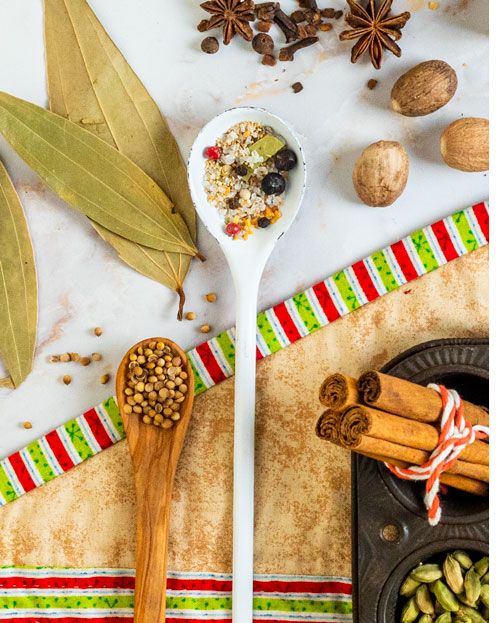 Christmas Whole Spices
Christmas Whole Spices
Ginger offers a little bit of tart heat and notes of lemon. It’s great in cookies, cakes, pastries, and sweet bread (hello, gingerbread!), but it also adds flavor to chicken and pork. Try it on carrots or sweet potatoes.
Crystallized Ginger is chewy and sweet, a playful way to add a gingery kick to cakes, pies, and relishes. Add some to cranberry sauce, mince pies, Christmas morning apple crumbles, or sausage dressing.
Saffron is musky, sharp, and floral with subtle honey undertones. It pairs well with honey, pears, rosemary, garlic, onions, ginger, and cardamom. Don't overuse saffron; too much can give a bitter taste to food.
Cardamom intensifies savory and sweet flavors, with a lemon-and-pepper flavor and a fruity, minty aroma. It is used in baked apples, fruit salads, and poached pears and works well with sweet potatoes and other root vegetables.
Cinnamon comes in many varieties. Ceylon cinnamon has a gentle, floral flavor that goes wonderfully in savory dishes. It is popular throughout Mexico and Europe. The cinnamon commonly found in kitchens across America is a Cassia cinnamon variety called Korintje or Indonesian cinnamon. It's much more pungent and woodsy and has a bold flavor that goes well with sweets and desserts.
Star Anise, with its star shape, has the right look for Christmas. It has a bold, licorice-like flavor and is excellent with poached figs, pears, and plums. It also emphasizes the sweetness of leeks, pumpkin, and root vegetables.
Christmas Herbs
Christmas herbs create a delicious potpourri in your kitchen! Use the following herbs whenever you want to add an herbaceous lift to your dishes.
Bay Leaves are pungent and bold, with notes of camphor and pine. Use them in marinades and long-simmering dishes. They go wonderfully with other Christmas flavors like allspice, nutmeg, parsley, sage, and thyme.
Dried Mint brings sweet pops of menthol to candies and chocolate, but it also brings a complementary contrast to heavier savory foods with chiles, lamb, or lentils.
Parsley is sweet and minerally, with notes of hay. It is excellent rolled into meatballs or tucked under turkey skin and roasted. This will go anywhere you need a touch of bright green herbaceousness.
Rosemary has a piney, woodsy flavor. It goes with all sorts of meat—particularly turkey and pork—but has a natural affinity for just about any potato you can imagine.
Sage almost tastes velvety, with an earthy base and hints of pine and musk. Sage is often a part of the herb bouquet thrown inside a roasted chicken or turkey when making a feast, but it's also inextricably linked to stuffing recipes.
Thyme is woodsy and peppery, with a light touch of smoke and camphor. It’s friendly to an enormous array of flavors, so add it wherever you need to lighten the flavor. It goes well with heavier dishes, so feel free to add it to braised short ribs, whole-baked fish, brisket, or herb-roasted Cornish hens.
This is just a sample of the holiday herbs, spices, and blends you can enjoy during the fall and winter months. With all the opportunities to taste these sweet and savory seasonings, you don’t need to limit your enjoyment to just one holiday!


